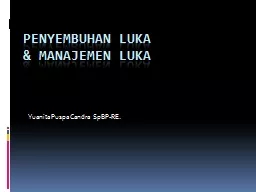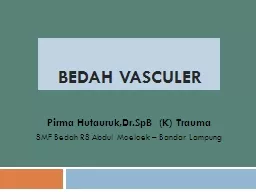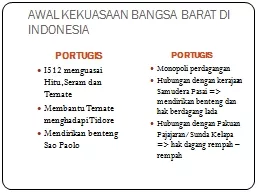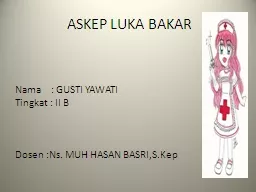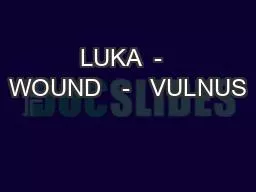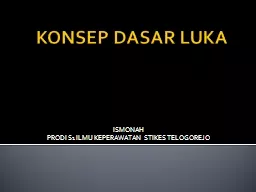PPT-PENATALAKSANAAN AWAL KEGAWAT DARURATAN BEDAH: LUKA BAKAR,LISTRIK DAN PETIR
Author : garboardcola | Published Date : 2020-11-06
Dr DEDDY SAPUTRA SpBP RE FK Unand RSUP dr M Djamil PADANG LB Injuri kerusakan jaringan kulit amp jaringan tubuh yang disebabkan trauma thermal
Presentation Embed Code
Download Presentation
Download Presentation The PPT/PDF document "PENATALAKSANAAN AWAL KEGAWAT DARURATAN B..." is the property of its rightful owner. Permission is granted to download and print the materials on this website for personal, non-commercial use only, and to display it on your personal computer provided you do not modify the materials and that you retain all copyright notices contained in the materials. By downloading content from our website, you accept the terms of this agreement.
PENATALAKSANAAN AWAL KEGAWAT DARURATAN BEDAH: LUKA BAKAR,LISTRIK DAN PETIR: Transcript
Download Rules Of Document
"PENATALAKSANAAN AWAL KEGAWAT DARURATAN BEDAH: LUKA BAKAR,LISTRIK DAN PETIR"The content belongs to its owner. You may download and print it for personal use, without modification, and keep all copyright notices. By downloading, you agree to these terms.
Related Documents



